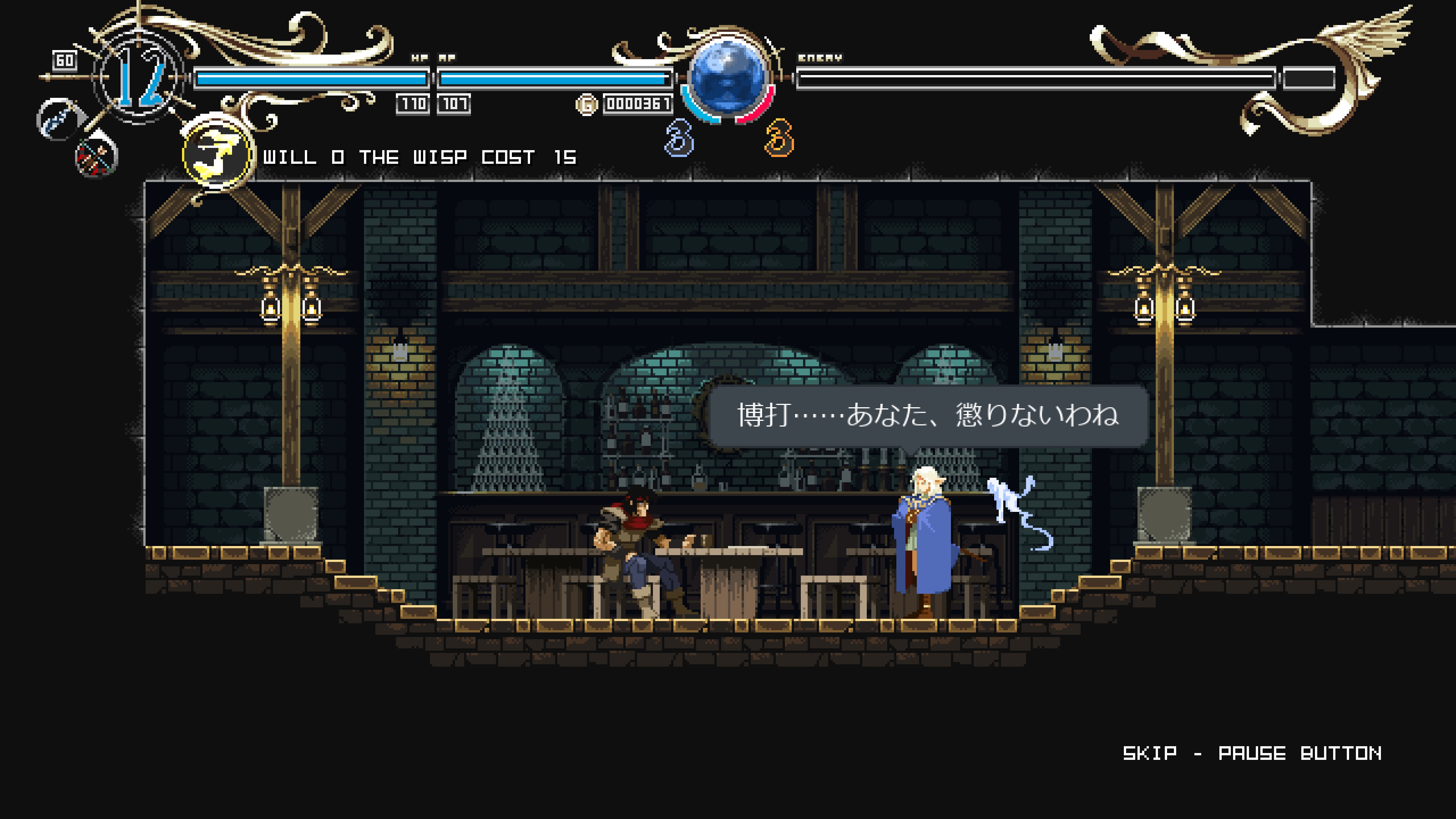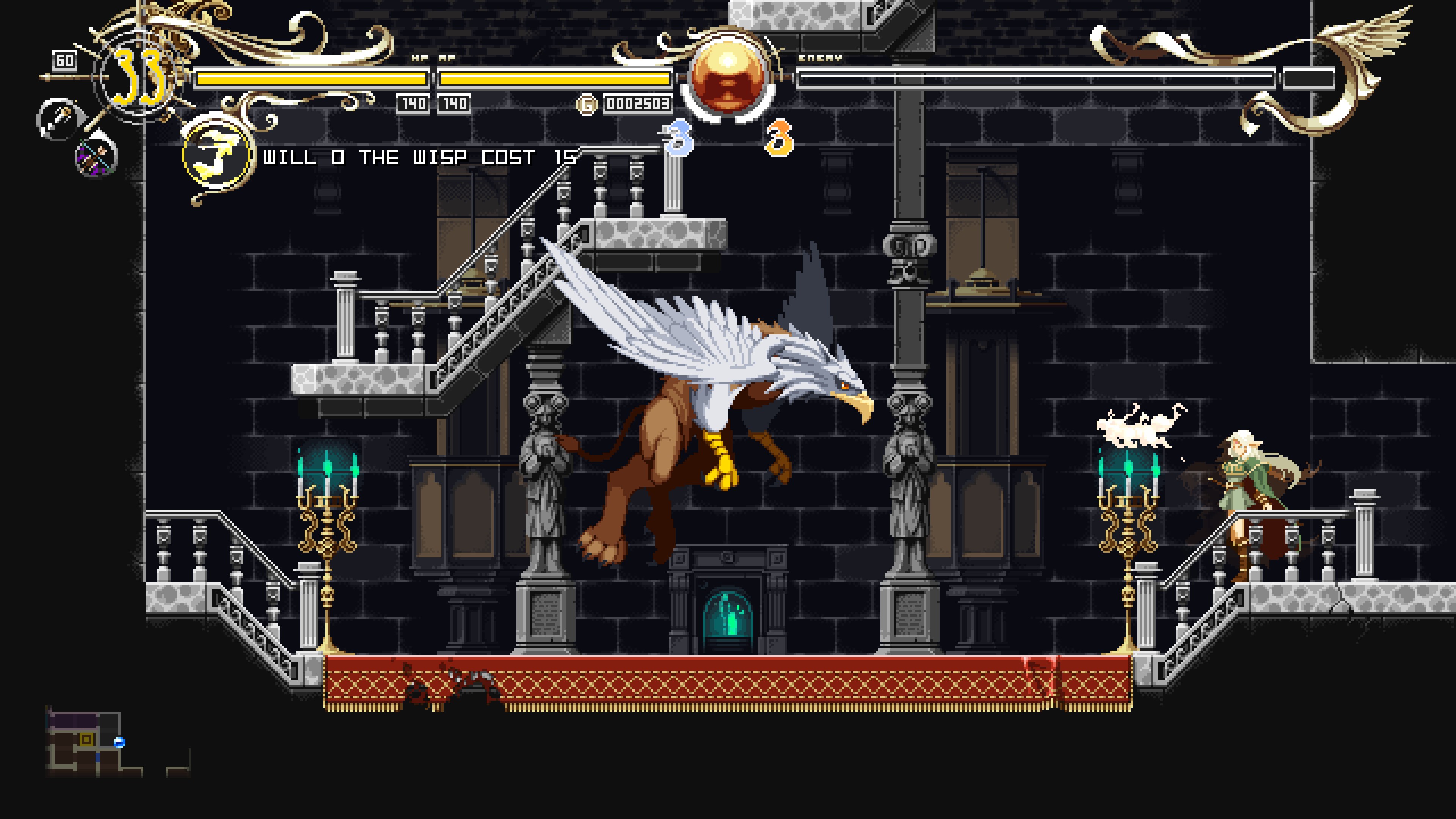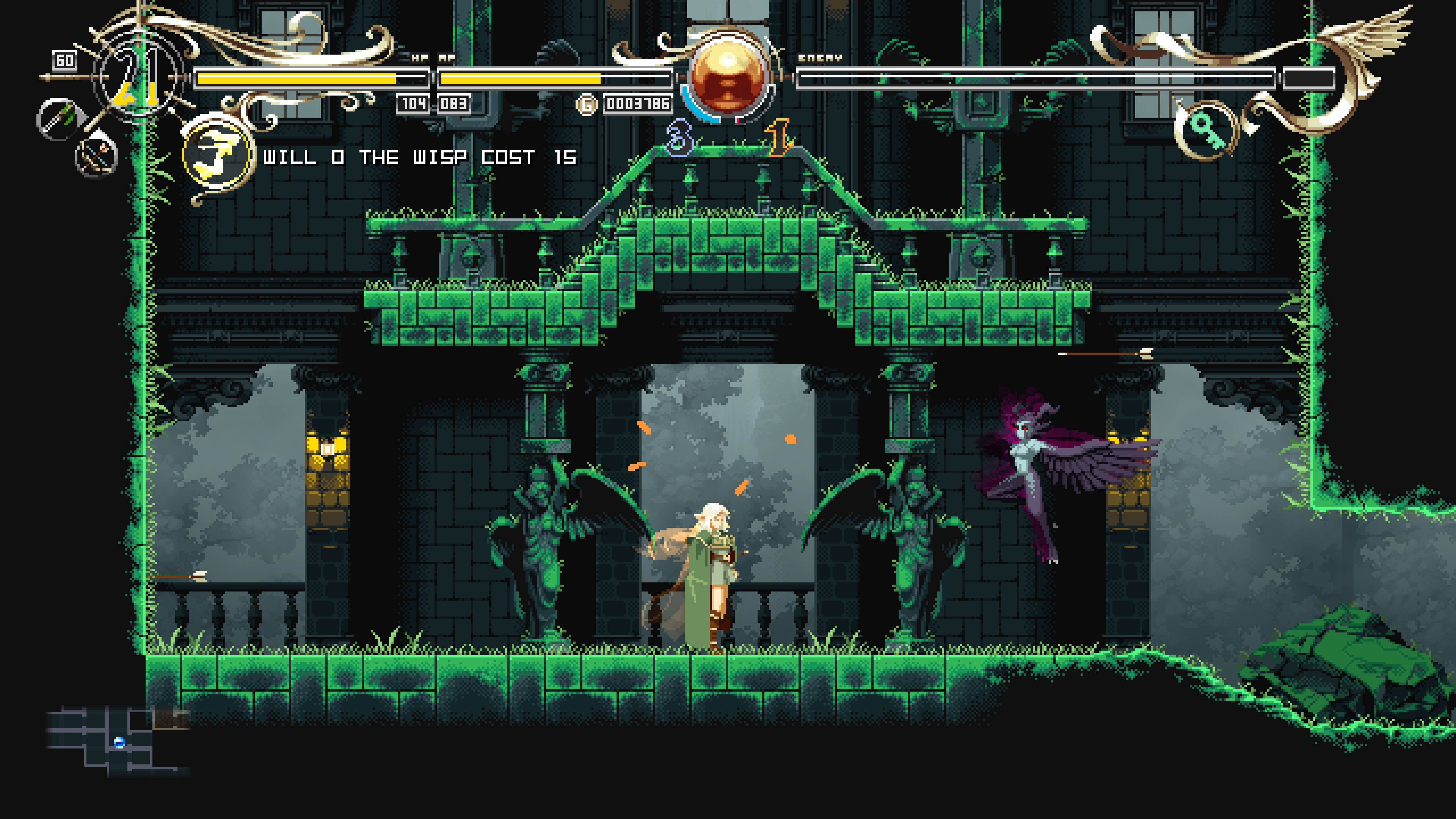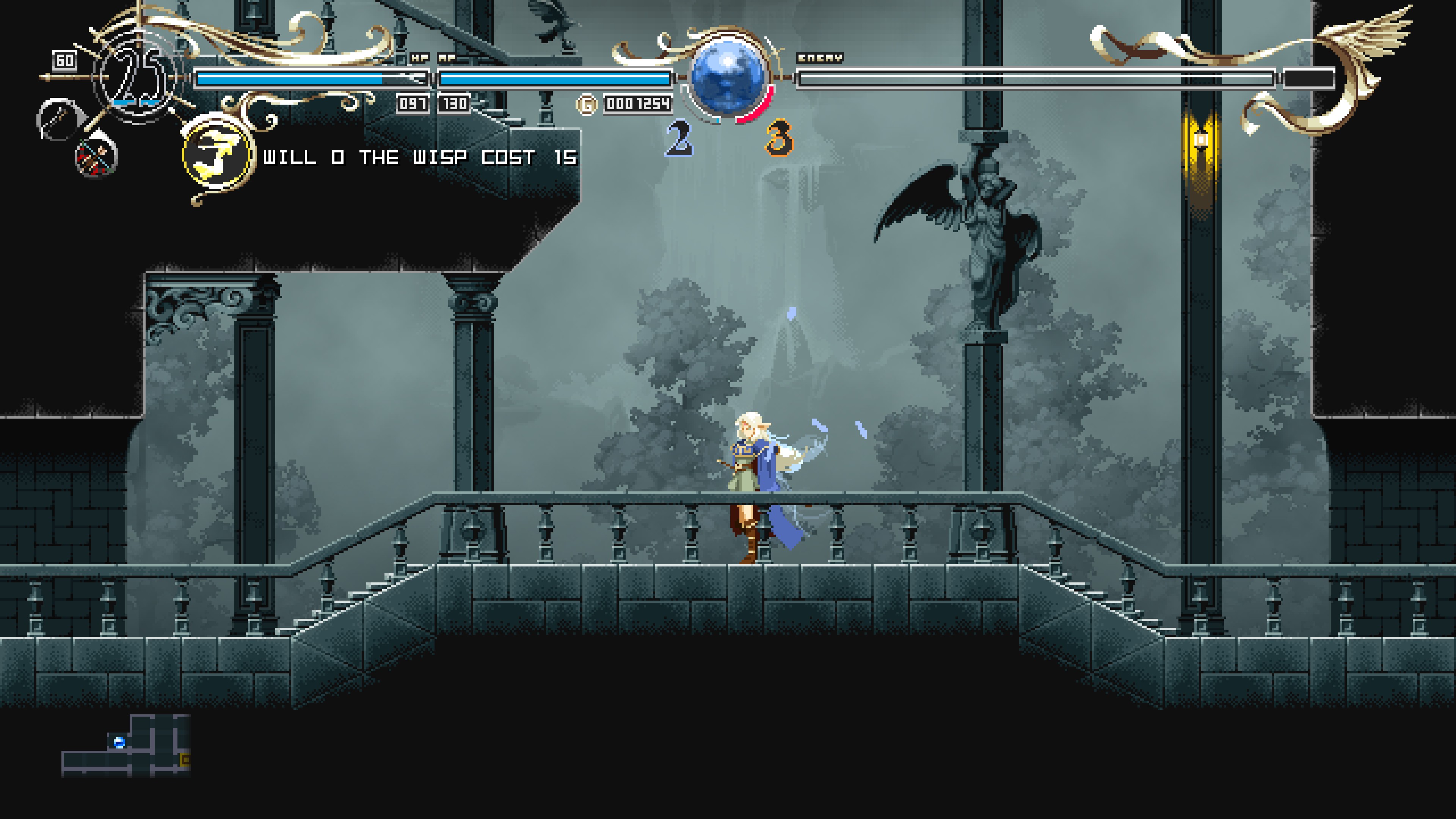
Despite being one of the big guns of anime when I was getting into the medium, I don't think I've ever seen Record of Lodoss War, not properly. It aired regularly on the Sci-Fi Channel during its attempts to introduce anime to broader audiences in the mid-to-late-'90s, and I remember catching bits and pieces: the omnicompetent elf Deedlit's first meeting with the young knight Parn, upbrading him for causing a big clumsy human ruckus when "there are fairies in these woods," and what I believe was the opening scene, of the six heroes moving silently under cloaks in a rainstorm, à la the intro to Clock Tower: Ghost Head, albeit concerning less-nefarious business. I remember an upscale video catalog dedicated primarily to British programming featuring the Lodoss box set, trying to showcase anime to its patrons as "the hottest new Japanese import" (unfortunately, it must not have taken, as the box sets were on clearance a few months later). I remember the Dark Knight Ashram, a fan favorite of so many, and someone on some forum or fanzine coining the term "Parn syndrome" to refer to bland, not-very-capable heroes who were blatant stand-ins for the target shounen audience able to trump far more interesting and powerful villains through author fiat. (I would have termed this "Alex syndrome" myself.)

What drew me to Deedlit in Wonder Labyrinth, and ultimately convinced me to purchase it during the latest Steam sale, was the game proudly putting Deedlit front and center in its promotion, the game icon consisting of a glamorous, unabashedly loving illustration of Deedlit bathed in sunlight. Deedlit was a top-tier waifu in the '90s, and I outright goddamn admire the creators going, "You know what? We still love this character! This character is good, and she deserves a starring role in her own video game, vagaries of time and franchise popularity be damned!" Hell yeah! Go ahead! Bring on Ghaleon in Wonder Labyrinth. If my enthusiasm seems inconsistent with recent comments I've made, hang on a bit.


As promised, the premise of the game finds our Deedlit waking up in a labyrinth, her memory hazy and recollection of what she's doing here unclear. She explores to find her old friends present as well - except they're not quite acting right, and they seem to be in on something she isn't. But this labyrinth is full of monsters! Is Deedlit going to sit around and eat pizza? No: she's going to collect a variety of weapons and power-ups in a bout of recursive unlocking to get to the heart of what's going down here.


Now: while I recommend the game and have a lot of praise for the story, I found during the course of breaking down the title that I had a number of complaints, and there isn't a way into discussing Wonder Labyrinth that isn't going to make my recommendation here sound overly qualified. So let me say up front: this is a good, solid Metroidvania with fun gameplay and good (though frequently-borrowed) visuals, one that doesn't overstay its welcome, with a denouement that made me very glad I played it. If it's piqued your interest, get it; you'll be rewarded. Please keep that in mind during the discussion of strengths and weaknesses below.

Taken from the official site; I have to hold down a second key to access the function row on my laptop, so I'm notably lacking in combat shots in my own screenshots.
While Wonder Labyrinth has beautiful sprite art, the first thing you'll probably recognize is the stuff stolen from everywhere else - startling with Deedlit herself, whose animation frames are very obviously traced over Alucard's from Symphony of the Night. Early bosses have their intros and attack patterns swiped from Order of Ecclesia and Shadows of Mystara. There's a lot of impressive work here - a lot of it, such as Deedlit's beautiful, whirlwind-wrapped triple jump - but the steals are so blatant and right up-front in the game's presentation that at every turn, I was wondering: is this impressive sight original, or just something I don't recognize because I haven't played the source?

Mechanically, though, the game is on surer footing. Our elf protagonist, like everything in Lodoss, hews to fantasy archetypes, and while she'll spend much of the game swinging a bladed weapon - not only her trademark rapier but even quicker knives & catclaws, ranged shuriken & chakrams, and two-handed buster swords with devastating overhead strikes - her offense will rest more heavily on archery and magic than the average Metroidvania protag. Once you acquire a bow, you'll always have arrows at the ready, mapped to the one of the face buttons. While aiming is clunky - you hold down the button to plant Deed's feet and tilt her torso back and forth to aim in a rather limited cone, with no side switching and stiff animation that's swiped from the seraph enemies in Symphony's chapel - archery is a useful offensive option in several scenarios and offers a refreshing change of gameplay and mindset from melee combat. (I recall a boss battle that was initially cast as sword vs. sword but upon me remembering I had arrows completely changed character, from a tentative game of footsie to an exhilarating dodge-'em-up.) The game also features a number of light archery puzzles - ricocheting arrows off obstacles to strike targets & open doors, repeatedly hitting mechanisms from a moving platform to cross an expanse - that offer useful variety. I didn't always enjoy how it felt if more exact aiming than "straight ahead" was required, but despite the controls, the archery does add some welcome speed and spice.


Magic revolves around an Ikaruga-like elemental system. After making their acquaintance very early in the adventure, Deedlit will always be accompanied by either a fire spirit or a wind spirit. Deedlit's primary weapon will be imbued with the elemental affinity of her current companion, which naturally affects how much damage she deals to enemies depending on their own alignments. She can also, though, nullify magic traps and enemy magic attacks and absorb them as MP if she has a spirit of the same element equipped. This becomes a particularly crucial tactic during boss battles, where rapid switching between spirits (it's mapped to a shoulder button) is necessary not only to survive but to fuel your own offense. The mechanic lends itself to show-stopping displays of enemy force and crazy spell patterns (that, yes, also share DNA with shoot-'em-ups), as well as hectic periods during regular exploration when enemies of opposing elements are clustered close together.

The spirits also bestow upon Deedlit a couple ancillary abilities: wind allows her to hover for a bit, while the fire endows her slide with an offensive kick. Though the kick remains entirely optional, the hover does figure into a few mobility puzzles where you'll need to switch nimbly between your wind-fueled hover and protection from fire-based traps. Sometimes it's hard to see what element you are in the heat of a pitched boss battle, where quick & constant switching is often required, but otherwise, in addition to powering puzzles, the elemental system adds a react-on-your-feet immediacy to gameplay and strongly distinguishes the title from other Metroidvanias. It's a showcase mechanic, and it works well.

You also have just-plain offensive spells, mapped, like arrows, to a face button, and this actually causes a problem. The very first spell you get is a light-elemental several-shot homing attack that is massively, massively overpowered, to the point where it renders a number of the initial boss battles completely trivial. Things get a bit more balanced later on, but the spell remained a pillar of my offense, my #2 attack option after (and sometimes preceding) my basic melee. Deedlit can find several other spells with different attack patterns along her adventure, but I very seldom bothered with them outside a couple experimental casts, because the opening spell is just so powerful, and it homes. Props for making magic so viable in a basic-attack sense rather than an only-on-special-occasions sense, but the devs should have nerfed that spell a bit or reduced Deedlit's generous MP pool. Of course, I could have showed self-restraint, but what am I going to do when presented with a win button? Not use it?


Structurally, the map is solid - it's relatively compact, as the game is about 8 to 9 hours, but large enough to be satisfying to unlock. I do wish there were more secrets: once you get an ability that opens up map area, there will be one or two rooms you can access elsewhere than in your immediate level, but there aren't any extensive alternate routes or significant goodies for creative explorers. Hidden stuff is generally restricted to one HP/MP pickup and a couple rooms with an extra weapon per level, with the breakable passages announced by telltale cracks. (Then again, though I did get 99% map completion, I've seen other players in post-game conversation reference a number of abilities & spells I completely missed, so maybe the failure is on my part here.) One point of praise: once encountered, barriers are marked on your map with color-coded notation for easy backtracking later, something I don't recall Castlevania ever doing.


Getting back to aesthetics: while the individual details of sprite art itself are well-wrought, the levels could use a spark of originality. Even though the Metroid-like Castlevanias generally take place in the same location (Drac's castle), they still manage to offer memorable settings: a chapel framed against an open, racing sky, or a bone-bedecked museum of skeleton enemies, or Dracula's big Scrooge McDuck gold coin vault. The so-called Wonder Labyrinth has a few differences from level to level, but it's largely a bunch of dim stone galleries with various statues. Neat-looking statues, possibly-cadged statues, but the overall effect is a bit on the dour side nonetheless. Likewise, the music is OK but a bit unremarkable; it has the attitude and instrumentation of a Metroidvania OST but not the melodies to dig into your brain. Describing it as Castlevania Muzak is too mean, but it has the same unobtrusive, kind-of-going-nowhere qualities. It's not bad, but the game would benefit from it being better.


I think this is a byproduct of the devs coming from fan game production, notably the prodigious Touhou series; it's a professional production, but gamewise, the inspiration often isn't *quite* there, and they're still leaning too heavily on storied forebearers in the genre. They do, however, excel definitively in one aspect, and that's the ultimate destination of the story. Spoilers below.
(Well, below this. Before I continue to what I consider the highlight of the game, I have to mention one more qualification: the existing English translation is accurate but stilted, and I switched to Japanese fairly early on. The nature of the story is such that I believe the crucial parts would shine through the existing text, but a fan retranslation would be of great value here. Play this in Japanese if you're capable.)

Though you might have guessed the nature of the tale through my unsubtle Silent Hill 2 references, I've tried to keep descriptions of the story to a minimum, because it's extremely apparent what's happening from the opening crawl, with its copious noting of Deedlit's nigh-ageless nature and how "many years" have passed since the Lodoss adventure. Like James after Mary, our heroine is intent on chasing her love throughout the labyrinth, to the ominous commentary of those she encounters. At the climax, she at last catches up, only to have recovered her memories in the interim. As she greets the object of her pursuit ("Parn...my dear knight"), she recalls his fate: "you lived your life to the fullest, as was your nature" - then passed away.

Well, of course, there is a malevolent force seeking to exploit Deedlit's sorrow, but it is almost beside the point - even in confrontation, it takes the form of the Evangelionesque monument to Parn's memory that lives within our lead's mind, condemning Deedlit and her failure to provide the correct response in Parn's voice ("Why?... Why do you refuse me?... You were supposed to throw yourself into my arms!"). After the inevitable, Deedlit awakens in their home, broken and disused from her long depression and the other resident's absence. For the first time in what we gather is a long while, Deedlit steps outside, and the game allows her and the player time to wander sunlit nature with renewed life. Eventually, Deedlit reflects on how beloved Parn was by the people he saved, how so many wanted to hear his tale - but, she realizes, she was the only one who feared hearing its end. Now, she vows, she will share with others the story of her love's life, having gained a new appreciation of its significance.


(The game parallels Deedlit's journey with that of fellow elf Pirotess, who is driven by love for her own lost knight to take a devil's bargain; upon seeing that whatever is representing itself as Ashram has come back imperfectly, however, she realizes that attempting to prolong his existence artificially, in a manner inconsistent with his values, is a dishonor to his life, an affront to his "honor as a knight." With great difficulty, she lets him go - but not his memory, pledging a more suitable tribute as she herself fades away: "I will love you forever.")
It's a very simple story, yet I found it deeply touching, and not just because it recalled another elf parted from a knight who lived his life to the fullest. I might seem hypocritical here, praising the story in a third-party Lodoss game right after decrying a third-party attempt to bring Lunar back to life. Lodoss, of course, is not remotely as near or dear to my heart as Lunar, but what makes Wonder Labyrinth a treasure instead of an affront, I think, is a sense of humility from the designers. They didn't set out to make the next big Lodoss adventure; they wanted to make a small, heartfelt story exploring a corner of its known universe. Love suffuses the game: in its conception, in its construction (there are a number of missteps and some corners shorn, but it's due to the personal skill and resource ceiling for these developers, not lack of devotion to the project), and in the tale being told. They were careful to work within their limits, and their eyes are clear on the story they wanted to tell, the characters for whom they wanted to express their love. There's nothing of possessiveness in this.
With the prospective Lunar 3 developers, it isn't about the game, the world or characters; it's about what the game can do for them. For SoMoGa, it's a ticket to big-time publishing. For LunarNet, it's an expression of social control: the ability to dominate a group of fans through ownership of the property to which the group is dedicated. (I rail against the LunarNet stuff in particular, but abusing your caretaking role to misrepresent and suppress part of a game's world and legacy for personal benefit goes against everything I've tried to do in all these years of translating game material and posting it online.) Both parties know that they have neither the resources nor talent to do the franchise justice, to make a proper follow-up to one of the 16-bit titans. It's not them honoring the memory of the beloved. It's them profiting at the expense at that which they claim to love.
Enough attention on that, though. In its gameplay and technical aspects, Deedlit in Wonder Labyrinth has a number of significant drawbacks, but there's enough here that works to make the game solid, worthwhile, and, with its elemental mechanics, even distinctive. In writing this, though, I realize that I haven't seen a video game this much about genuinely loving someone since the Leave ending of Silent Hill 2. That's extremely high praise.


